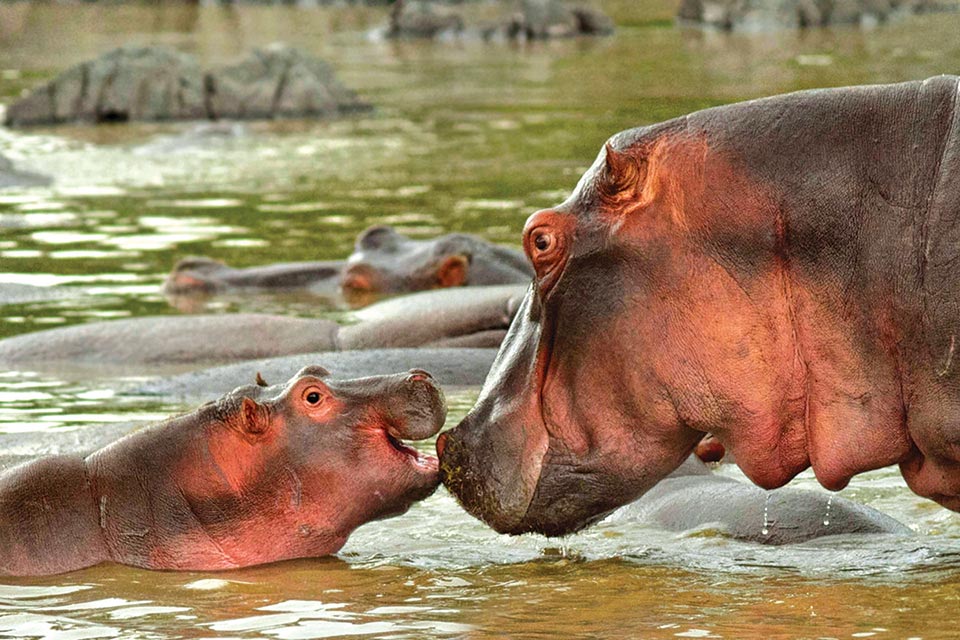
The hippopotamus also referred to as a “hippo,” lives along the rivers and lakes throughout sub-Sharan Africa. They are listed as “vulnerable” on the endangered list and it is estimated the population is between 115,000 to 130,000. The hippo is the heaviest land animal after the elephant and can weigh up to 8,000 pounds. The life span of the hippo is up to 50 years in the wild.
Hippos seek refuge from the heat by living in water during the day, and at night they come ashore to feed on short, soft grasses and fallen fruit. These mammals require access to permanent water to keep their special hides moist. Common hippos live in groups of tens to hundreds, and the disappearance of a multi-ton grazer from the habitat will result in dramatic ecological impacts.
The eyes and ears of a hippopotamus are on top of its head, so it can keep watch for enemies while lying low in the water. The biggest wildlife enemies to the hippo are crocodiles, hyenas, and lions. The gestation period for a hippo is ten months.
Hippopotami (plural for hippopotamus) usually mate between May and June, when the females, called “cows,” reach peak fertility for a three-day span. Females reach sexual maturity between 7 and 15 years of age, whereas males, or “bulls,” are between 6 and 13 years of age when they are sexually mature.
Only the dominant male of a herd mates with the females. He checks their reproductive condition by smelling their urine. Mating usually takes place in the water with the female hippopotamus completely submerged. The female will usually only have 1 offspring every two years. When a mama hippo is ready to give birth, she will go off on her own to have her baby and to bond with the calf for a week or two. When she returns to the pod, the female community will help defend from predators. The mother carries her calf across a river in her mouth for safety from other animals and hippos. At birth, the calf weighs between 50 and 110 lbs. For its first eight months, the calf nurses while its mother is on land, or it swims underwater to suckle. Mother hippos have to
protect their young from male hippos. Grown males don’t attack on land, but they will attack and often kill baby hippos underwater. The hippopotamus is the world’s deadliest large land mammal, killing an estimated 500 people per year in Africa. Hippos are aggressive creatures, and they have very sharp teeth. Hippos can apply several tons of pressure in a single bite.
The incredible hippo has been a part of the African ecosystem for millions of years, once ranging from the Nile river valley to the Cape. However, hippos are now confined to protected areas. Of the 29 countries where common hippos are still found, populations are confirmed to be declining in half of those countries.
There are actually two types of hippo species in Africa. The large hippo, or common hippo, are found throughout East Africa’s grasslands and wetlands, and the small, solitary pygmy hippo dwells in West Africa’s forests. Only 2,000 – 3,000 pygmy hippos likely remain in Africa. The common hippo and the pygmy hippo are listed as “vulnerable” and “endangered,” respectively.
